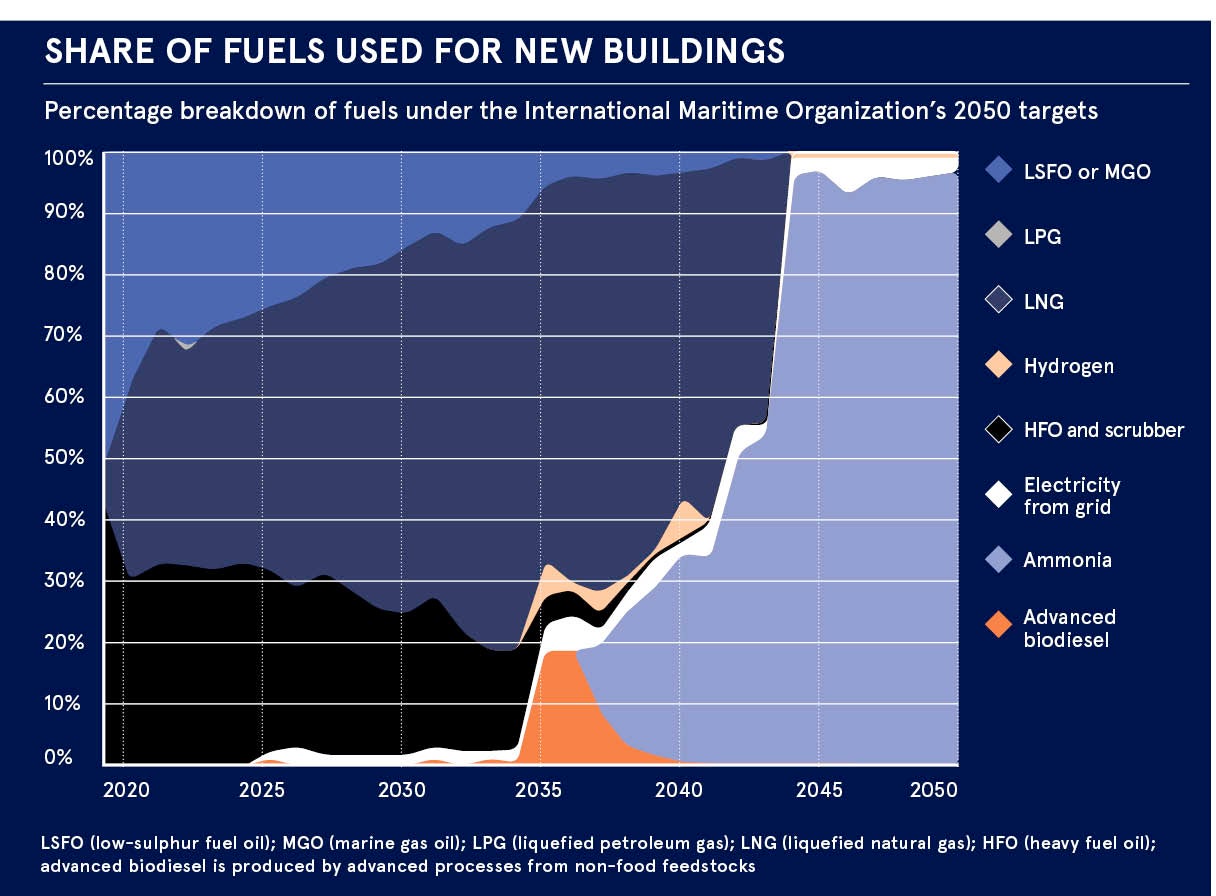Meeting International Maritime Organization (IMO) targets for reducing greenhouse gas (GHG) emissions from shipping will take mandatory requirements for individual ships, and other policy measures to support the development and use of new fuels and technologies.
“This is a clear message when we asked our model what would happen when selecting various regulatory pathways for reducing GHGs from shipping,” says Tore Longva, a lead author of the Maritime Forecast to 2050 and principal consultant at DNV GL’s regulatory affairs section.
Modelling the future world fleet and its emissions
The Maritime Forecast to 2050, one of DNV GL’s energy transition outlook 2019 reports, takes its focus from the IMO GHG ambitions and growing external pressure on shipping to cut emissions. It examines how shipping may meet the GHG targets given various potential developments in energy efficiency, logistics and alternative fuels.
Applying the GHG pathway model based on long-term trends, the report projects possible pathways for the world fleet size, fuel mix and CO2 emissions towards 2050 for the expected transport demand.
We see a big impact of energy-efficiency measures and vessel speed reduction, which can be achieved early in the period up to 2035
The report describes the results for three modelled GHG pathways. Two of them focus on vessel design or operational requirements to achieve IMO ambitions where regulations will be in place for individual ships to incentivise the necessary emissions reduction, but the specifics of the regulations differ.
The first pathway assumes that current ships and those built over the next 20 years will not make a major shift to alternative, carbon-neutral fuels. New builds will have to make a complete fuel shift from 2040 to reach the IMO targets. Under these assumptions, the shipping industry will not have to consider retrofits and fuels compatible with current converters, but continue to design new builds for the most relevant fuel.
In the second scenario, a more gradual improvement is enforced through operational requirements for ships in operation. Drop-in fuels, such as advanced biodiesel and liquefied biogas, are preferred to avoid costly retrofits.
A third, current policies, pathway describes what happens if no further policies are introduced. It assumes IMO will not issue any other requirements beyond the existing Energy Efficiency Design Index and the Ship Energy Efficiency Management Plan.
“In all pathways, we see a big impact of energy-efficiency measures and vessel speed reduction, which can be achieved early in the period up to 2035,” Mr Longva explains. “This is because these measures do not require renewing the fleet. We see emissions peaking in mid to late-2020.”
Without further regulation, a sufficient uptake of alternative fuels to meet IMO GHG targets is not expected unless prices for alternative fuels move to the same level as those for fossil fuels. For the current policies pathway, the forecast projects 670 MtCO2 of emissions in 2050, which is 27 per cent below 2008 levels. In this case, carbon intensity ends at 8.2 gCO2/tonne-mile, 62 per cent less than in 2008. The results indicate that even with low to moderate seaborne trade growth, IMO’s ambition for a 50 per cent absolute reduction in CO2 emissions by 2050 is stricter than its 70 per cent carbon-intensity reduction target.

Predicting the future energy mix of the world fleet
In all pathways, liquefied methane has a dominant share of 40 to 80 per cent of the fuel mix in 2050. The primary energy source of the methane varies between fossil sources like natural gas, biomass and other renewables.
Ammonia is the most promising carbon-neutral fuel option for new builds. Another alternative would be a gradual shift of existing ships relying on drop-in fuels compatible with current fuel converters, such as bio/electro-diesel replacing liquid fuels or bio/electro-methane replacing liquefied natural gas.
Preference for ammonia is due to the lower cost of the converter, storage and the fuel itself compared with H2 and liquefied biogas/synthetic methane. Carbon-neutral fuels have to supply 30 to 40 per cent of the total energy for international shipping by mid-century if IMO GHG ambitions are to be achieved.
Download your copy of the latest Maritime Forecast to 2050 at dnvgl.com/eto

